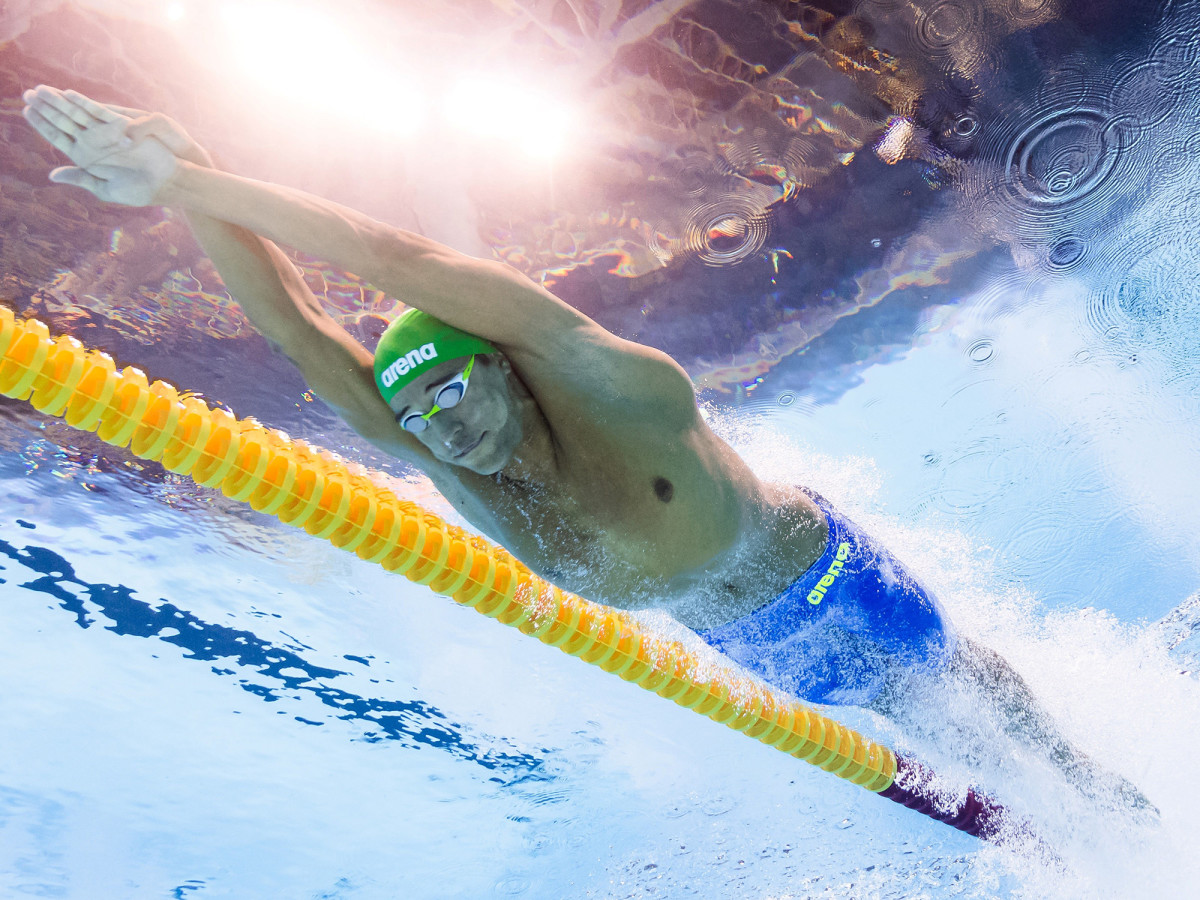How BMW is using auto technology to help Olympic swimmers in Rio

The dolphin kick comes naturally to fish, but swimmers have to work for it. USA Swimming teamed with BMW engineers to design a system to capture and analyze the dolphin-kick motion, helping Olympians train for faster pool times by improving the all-important dolphin-kick phase of their swims.
“We’ve known that the kick itself can be incredibly valuable, but until now there hasn’t been a good way to measure it to maximize the movement,” says Russell Mark, National Team performance consultant. “The tool is helping us identify the ingredients that make up a successful dolphin kick by receiving instant feedback that can be applied the very next time they jump in the pool, allowing for a more customized coaching approach.”

Team USA and BMW partnered in 2012 for the Olympics in London, but that early generation of the BMW Motion Tracking System software simply provided an enhanced view into the mechanics of the kick, where the pre-Rio 2016 version of BMW system evolved to use video capturing for specific swimmers while adding in kick depth and rate metrics.
Peter Falt, BMW designer, says that at the heart of the tracking system are two algorithms, designed to detect and adaptively track a swimmer’s motion, similar to the Computer Vision system BMW already uses in cars to measure and identify humans and items for park distance, road or lane deviation and more.
Katie Ledecky continues to lead U.S.’s medal charge in pool
“This tool allows for customized coaching by tracking and measuring the movement of the athletes’ joints and limbs during the kick and delivering hard data in real time to improve technique and maximize that movement,” he says.
The system uses LEDs to mark six critical joints—wrists, shoulders, hips, knees, ankles and toes—on a swimmer, literally lighting up the athlete on video, Mark says. By tracking the orientation of the spine, “we are able to see the variation of all of the joint angles relative to each other in order to gain understanding of the optimal combination of body movement.”
To improve the in-water tracking system, BMW used 3D printing to house LED “taillights” that light up the specific locations on the body with colored tattoos. The system can hold up to the intense force of Olympic swimmers, Falt says, and isn't noticeable by the swimmer, ensuring training didn't create a different feeling or result than seen in competition.
BMW focused on the dolphin kick because in a sport where .01 can mean the difference between gold and silver, it has been known the dolphin kick provides an advantage, but they haven’t known exactly what makes it more powerful.
Could the design of the pool in Rio be fueling Olympic swimming records?
“The goal of the motion tracking tool is to help unleash the power of the dolphin kick at starts and turns,” Falt says. Team USA's Nathan Adrian and Maya DiRado are both part of the the BMW Performance Team. In Rio, Adrian captured his fourth Olympic gold medal by winning the 4x100 freestyle relay with teammates CaelebDressel, Ryan Held and Michael Phelps.

Mark says the kick essentially has the body moving in a wave-type action—think “worm dance” in the water—and the movement of each body segment needs to synchronize to generate speed. Angles and timing are everything and the six points on the body tracked by the BMW system correspond to the segments in motion.
“No two swimmers are alike,” Mark says, “so this technology aims to help them learn what movements work best for their bodies to move faster in the water.”
Locked In: Compression the most crucial aspect for Olympic swimsuits
Team USA has already seen the improvements and coaches and athletes are now comparing their movements to top performers. “Our hope is that we can continue to fine-tune this tool to assess our swimmers and improve it for the next generation,” Mark says. “We tend to watch how the fastest swimmers move and try to emulate their technique, but if you don't have the same body characteristics, the technique won’t work the same.”
As Adrian and others learn to become more fish-like, they’ll continue to use engineering to help with the adaptation.
Tim Newcomb covers sports aesthetics—stadiums to sneakers—and training for Sports Illustrated. Follow him on Twitter at @tdnewcomb.
